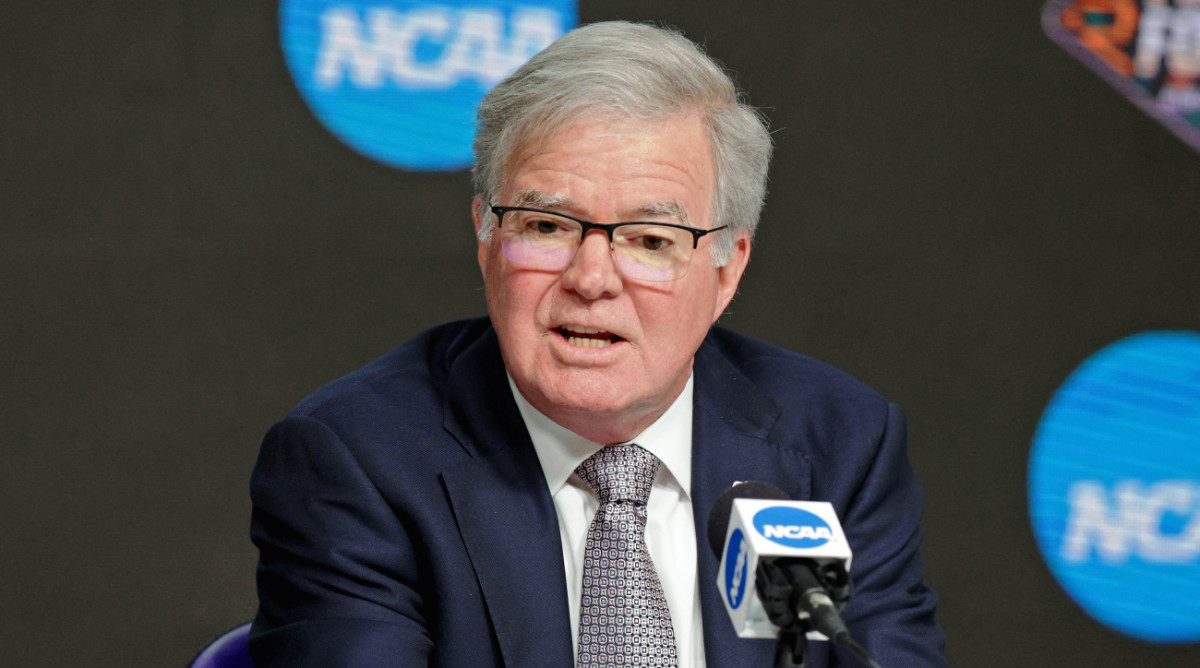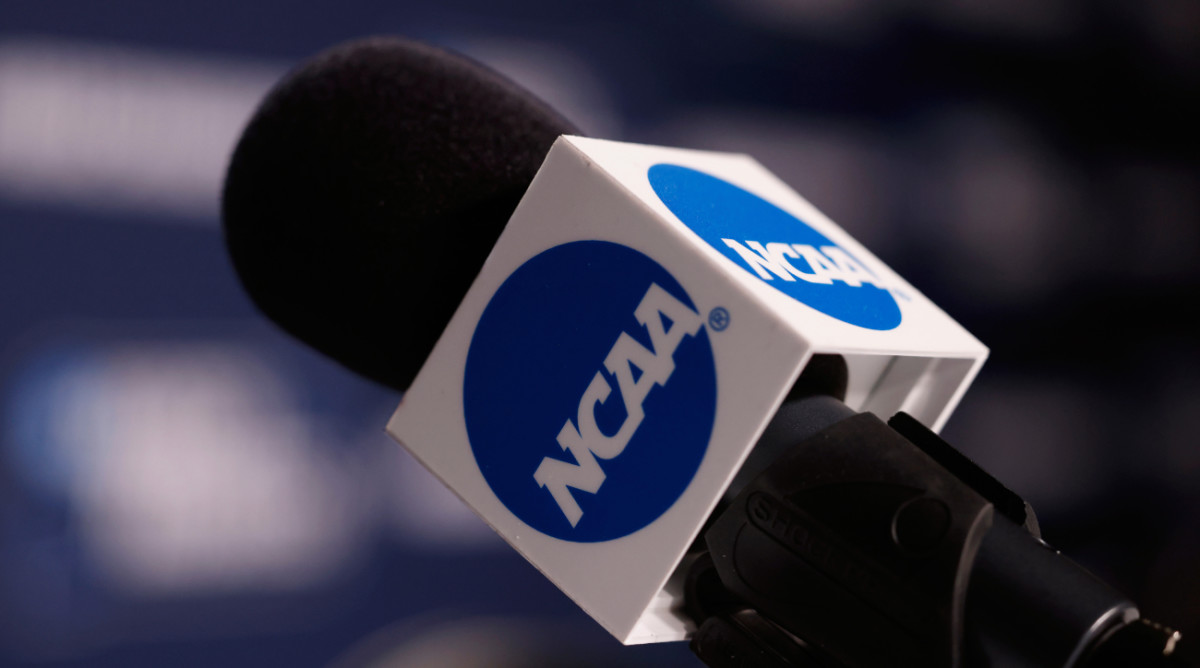College Power-Brokers Poised to Turn NCAA Upside Down
Imagine a college sports world where schools are able to offer each baseball player a full scholarship. Or if a football team’s on-field coaching staff could exceed 25 people.
What if the transfer portal was open to players for just three months out of the year? And what if the recruiting calendar featured no evaluation or quiet periods?
There is a distinct possibility these ideas could become more than just concepts.
The Transformation Committee, a group of high-ranking college leaders charged with overhauling and modernizing NCAA governance, is considering revolutionary changes some administrators describe as “radical.” In a briefing with athletic administrators this week in Dallas, committee leaders revealed ideas to deregulate longtime NCAA bylaws and decentralize such decisions to the conferences.
“It’s going to make some heads explode,” says one athletic director.
The Transformation Committee decided to share the concepts in an apparent effort to prepare administrators for impending change that is even more transformative than many expected. And many officials believe Tuesday night’s announcement that NCAA president Mark Emmert plans to resign next June is a first step in what will be a new NCAA, with transforming starting at the very top.

Several athletic administrators and college sports insiders discussed the Transfer Committee’s concepts under the condition of anonymity. They include (1) eliminating scholarship caps on sports that offer only partial scholarships; (2) abolishing the limitation on the number of coaches per team; (3) expanding direct payments from schools to athletes; (4) reconfiguring the recruiting calendar; and (5) implementing closed periods in the NCAA transfer portal. At least the first three items will be left in the decision-making hands of individual conferences, if the concepts are approved.
While these are only concepts and not approved measures, the ideas are being socialized across the college sports landscape, both in conference-wide meetings and at administrative summits such as the one in Dallas hosted by LEAD1, an organization that represents the FBS athletic directors. The items will be central topics at league meetings next month, when coaches, athletic administrators and university presidents gather to discuss national and conference legislation. (Any recommendations would likely need approval from the NCAA Division I Council and Board of Governors before becoming official.)
“Change is coming,” says another athletic director on hand for the committee’s three-hour presentation Monday in Dallas. “We better get prepared. We shouldn’t be shocked if all this does happen.”
Several members of the 21-person Transformation Committee declined comment or did not respond to messages when contacted by Sports Illustrated.
The committee’s ideas on deregulation were met with opposition from a wide swath of administrators. The moves to abolish restrictions on equivalency scholarships and coaching positions threaten to further widen the gap between the rich programs and those with lesser resources, some believe.
“Every G5 AD is like, ‘Holy s---!’” says one Group of 5 athletic director who attended the presentation.
Chasms already exist within D-I, the top level of the NCAA composed of 350 schools with disparate missions and varying resources all sprinkled across a massive geographic footprint and different cultural lines.
This diverse dynamic, along with myriad other factors—the NCAA’s loss in the Supreme Court case against Alston and the emergence of state-wide name, image and likeness (NIL) laws—have triggered intense and unprecedented change within the 116-year-old association.
The Transformation Committee, chaired by SEC commissioner Greg Sankey and Ohio athletic director Julie Cromer, has been tasked by Emmert and an executive group of school presidents to rewrite D-I policies by August. Now, some believe the process will stretch into the fall.
The concepts are one small part of a slew of changes the committee is expected to recommend. The group appears to first be tackling the deregulation of bylaws before exploring several other topics, including the infractions process, tournament automatic qualifiers and revenue distribution units. Sources tell SI that committee members have also examined college athlete employment but have yet to produce any recommendations there.
The concepts shook some of college sports’ top officials, but they were somewhat predictable. An SI story in January detailed the impending changes, partially a result of the moneymaking football powers insisting that they be able to spend more of their resources on their athletes.
If the concepts are any indication, spending handcuffs appear to be off. They would eliminate NCAA bylaws that attempt to legislate competitive equity and curtail costly spending—measures that have failed in a college sports industry ballooning at the top with cash from football.
“It doesn’t work in the collegiate model,” says one Power 5 AD. “It works professionally. There are drafts and salary caps.”
Perhaps just as important, the moves would abolish policies to help mitigate the risk of litigation. For years, the NCAA has fought a plethora of legal challenges against its amateurism rules, and the Supreme Court this summer slammed the organization with a 9–0 loss in the Alston case that sparked a decentralization of its rules out of fear of more antitrust lawsuits.
By sending policy-making decisions to the leagues, the association removes itself from a litigious situation but also further craters its own authority—opening the door for the football kings of the SEC and Big Ten to swell with more money and power.
Now, they may be calling their own shots on key legislation that will inflate spending and further divide the haves and have-nots.
“The gap is going to continue to widen,” says a G5 associate athletic director. “What does this look like a year from now? We had a facilities arms race, recruiting arms race and now NIL is its own arms race. It’s nuts.”

The expansion of scholarships would be a historic move, but it would not impact sports such as football and basketball, known as “head count” sports. They offer full scholarships to a roster of players: 85 in football and 15 in basketball. The concept pertains to sports offering partial scholarships, known as “equivalency” sports, such as baseball, hockey, track and field, and swimming. For example, the NCAA maximum scholarships allowed in baseball is 11.7 for a roster of 35—a figure often criticized by high-level baseball-playing schools from rich conferences that want to spend more. Under the transformation’s plan, a school could conceivably offer 35 full scholarships in the sport.
Lifting the “countable coach” rules would also be unprecedented, as NCAA rules currently restrict the number of coaches by sport. For instance, a football team can have no more than 11 coaches (one head coach and 10 assistants) and a basketball team no more than four (one head coach and three assistants). Other staff members, such as analysts and consultants, are considered non-countable personnel who are not supposed to coach players—a rule that is often bent, if not completely broken at many programs.
Restrictions on athlete “compensation, benefits and awards” is another area in which change is coming, according to a Transformation Committee slide shown to athletic directors and obtained by SI. It might include expanding on the $5,980 checks many athletes receive as a result of the NCAA’s loss in the Alston case. Schools are allowed to provide education-related benefits of such an amount. Some programs, like Ole Miss, are distributing checks to athletes who meet a not-so-tough criteria: remaining eligible.
The Transformation Committee is also exploring ways to bring regulation to the transfer portal, which is open year-round. The portal is flush with athletes using the one-time transfer exception to leave their school and play immediately somewhere else. The lack of a regulated structure is causing roster management problems that have college leaders considering an abolishment of the annual 25-man signing limit. Some have suggested concepts that keep the portal closed except for two five-week periods, one after fall semester ends and another after spring semester.
Concepts are also being discussed around simplifying the recruiting calendar, by potentially eliminating some regulations and replacing dead, quiet, evaluation and recruiting periods with two windows: a recruiting period and a dead period. More coaches and staff members—beyond the on-field 11 for football, for instance—would be able to recruit off campus, too.
Much of this comes at a significant cost, especially the expansion of scholarships of equivalency sports. If one conference allows such, will others feel pressure to follow suit? Some might not be able to afford the expense. Scholarships and coaching salaries are two of the top four expenses at schools each year. According to median data from Knight-Newhouse, about 37% of an FBS school’s budget is spent on coaching compensation and athletic student aid.
Title IX requirements could also complicate matters. The law requires schools to spend similarly on women’s sports as it does in men’s. If scholarships are expanded in baseball, a school would need to do the same in a women’s sport.
And if the decisions are left up to leagues with varying financial capabilities and different missions, it’s an unsettling prospect for some. Conferences must avoid the appearance of collusion by determining policies on their own without communicating with one another, making an already fractured college sports landscape even more splintered. Leagues could be, quite literally, playing by different rules.
The decentralization and deregulation, as well as the surge of million-dollar NIL collectives, are likely to accelerate what Notre Dame athletic director Jack Swarbrick recently described to SI as a complete split of the NCAA within the next decade.
“It’s been going that way for years,” says one Power 5 AD who agreed with Swarbrick. “It’s not going the other way. That gap isn’t closing.”
More NCAA Coverage:
